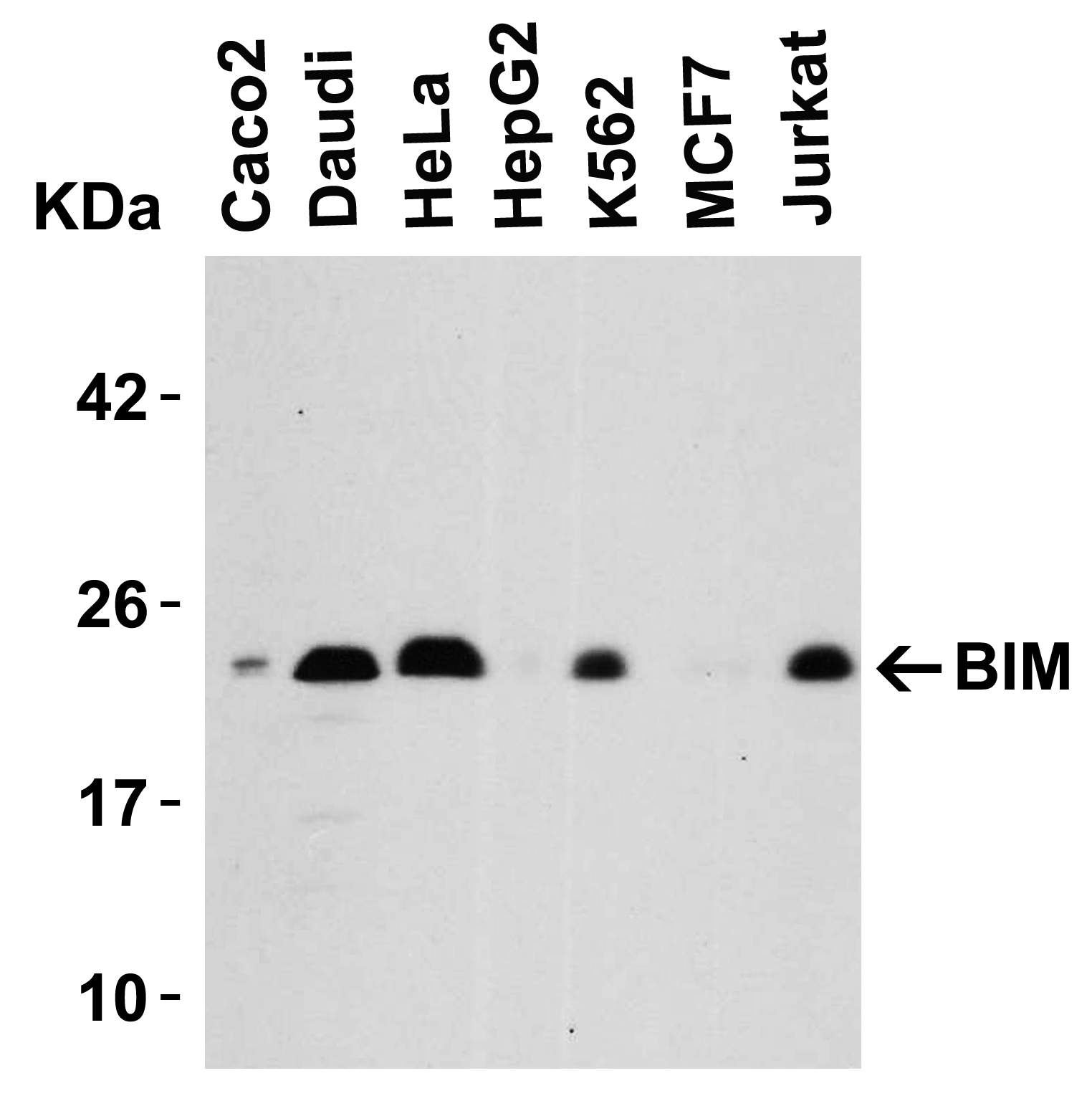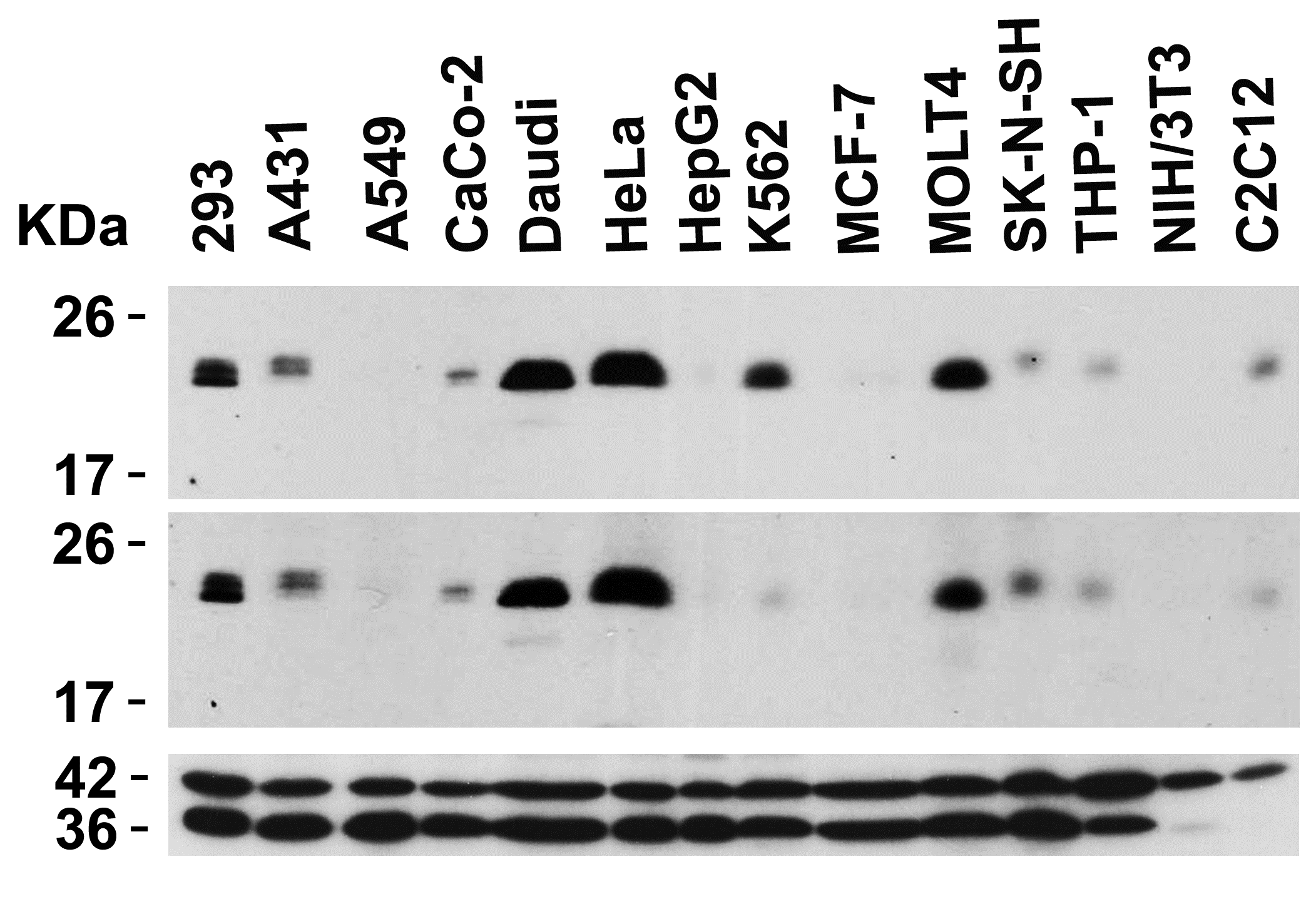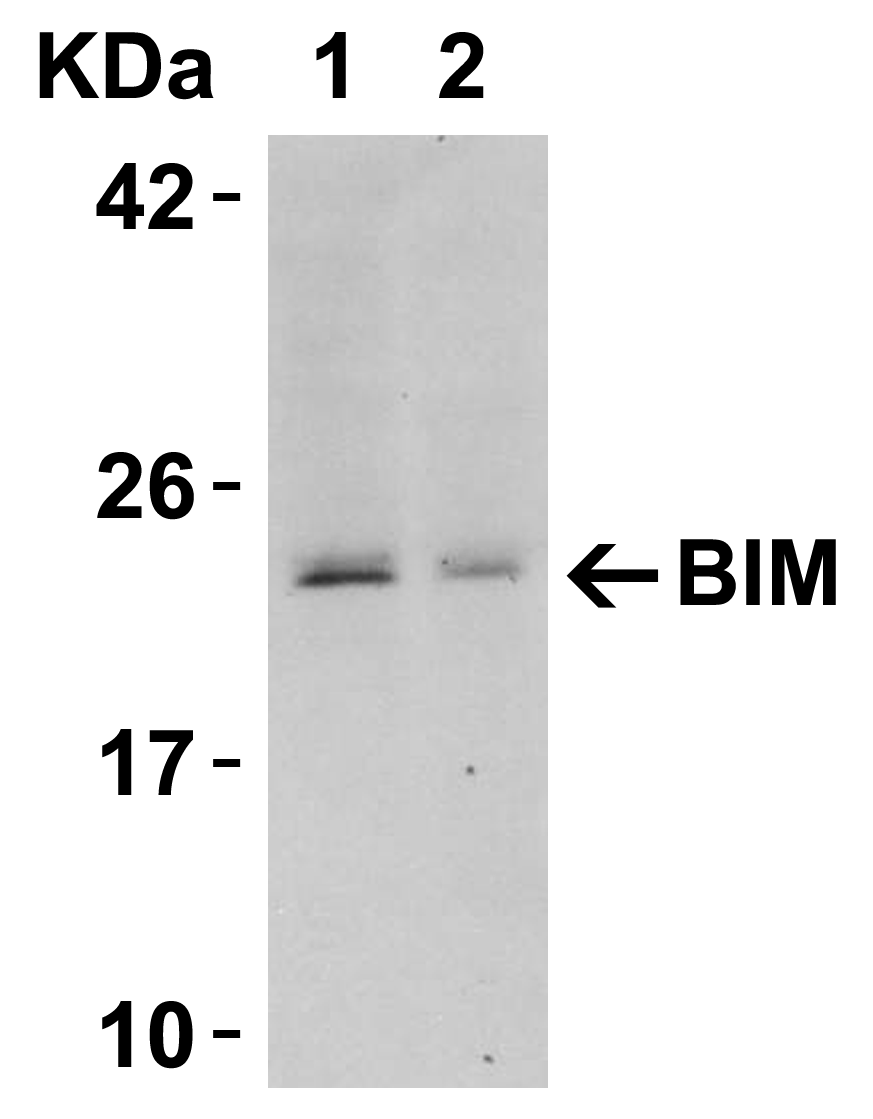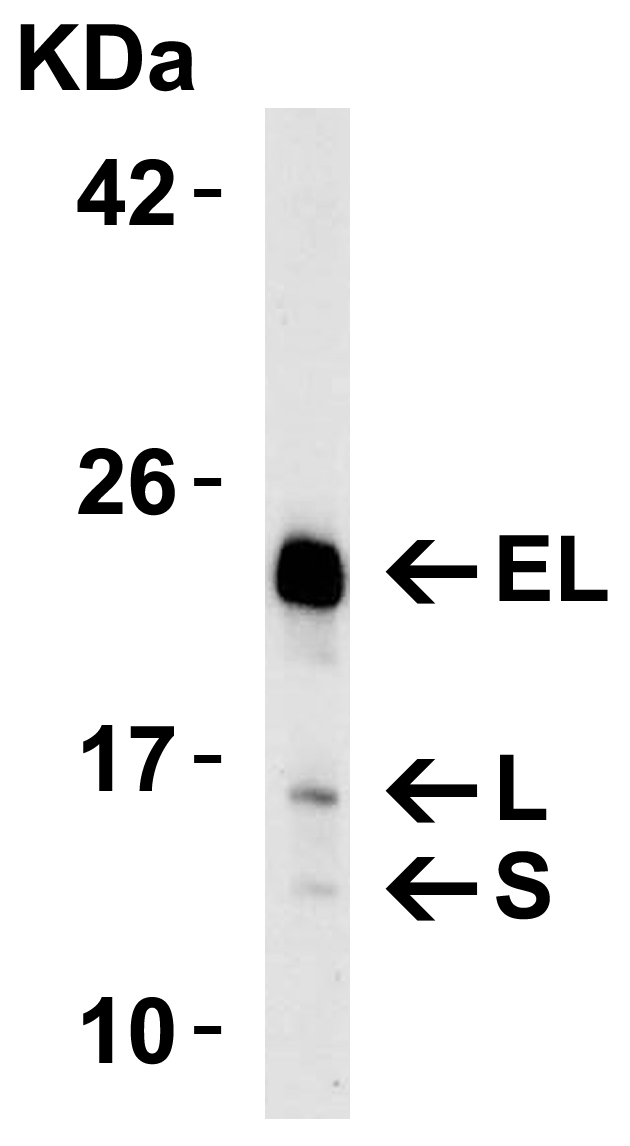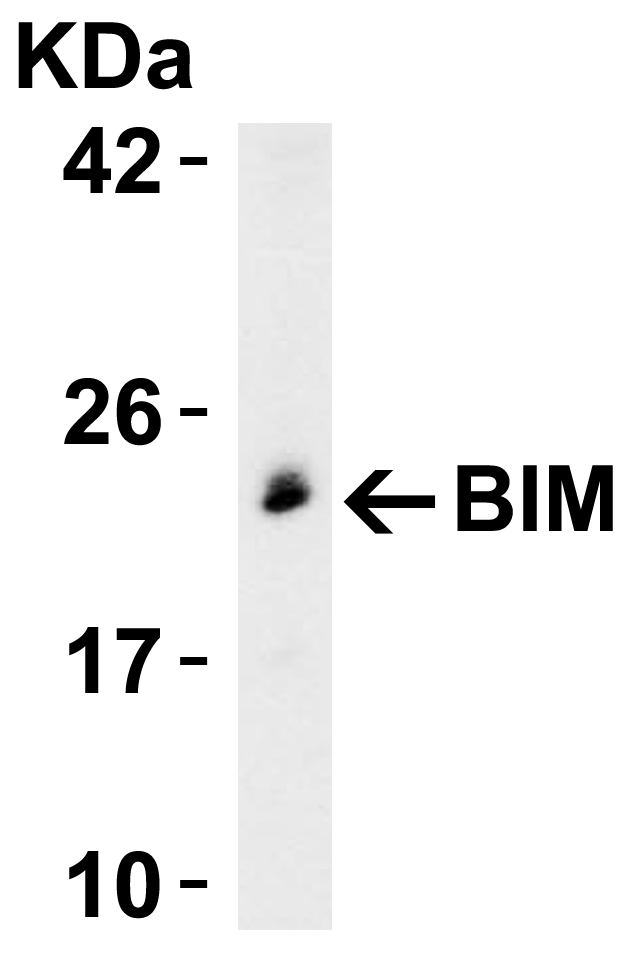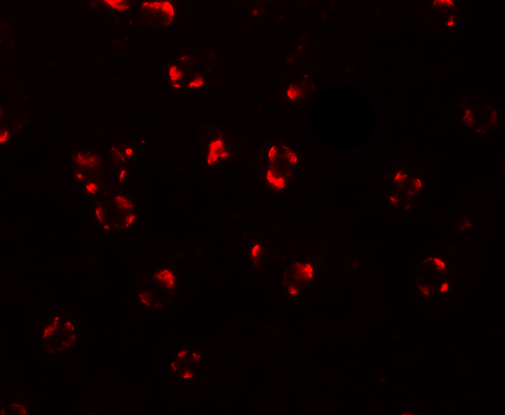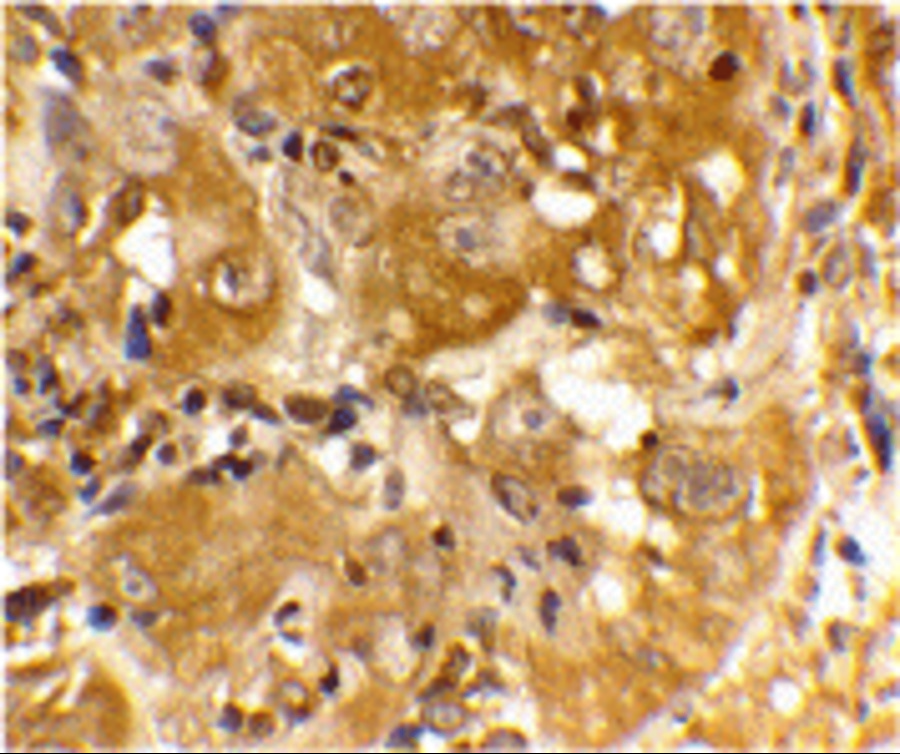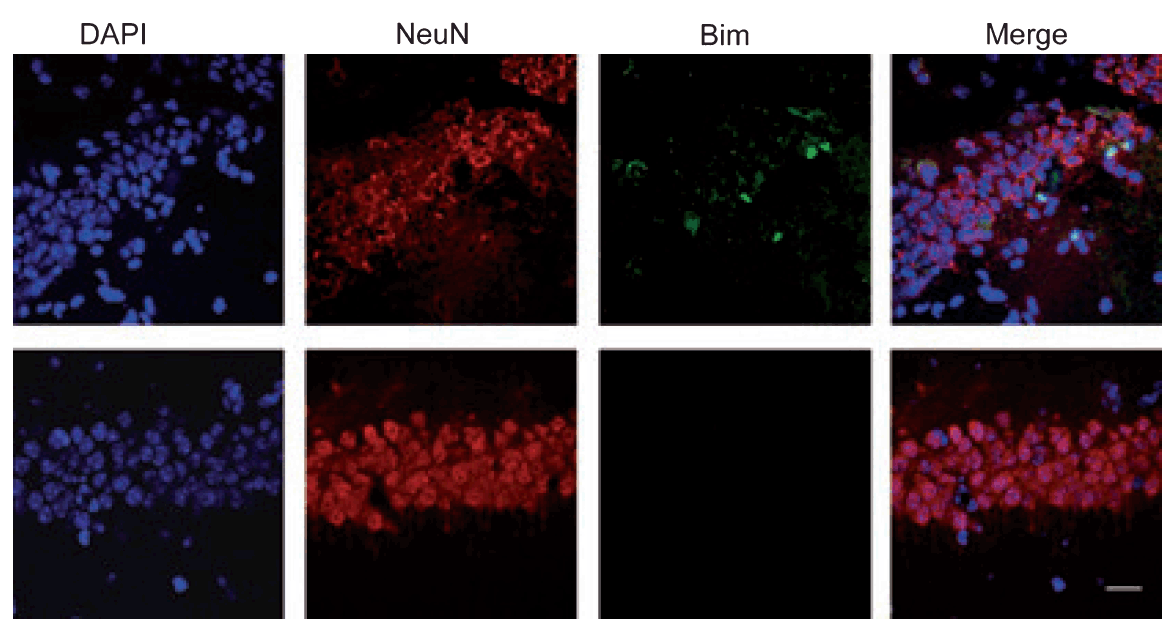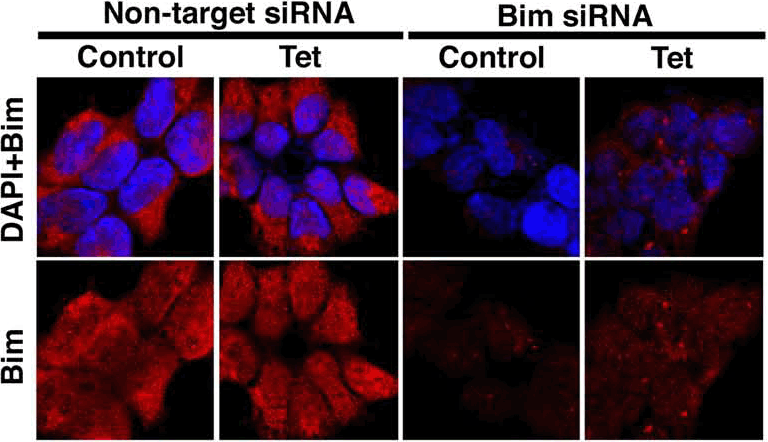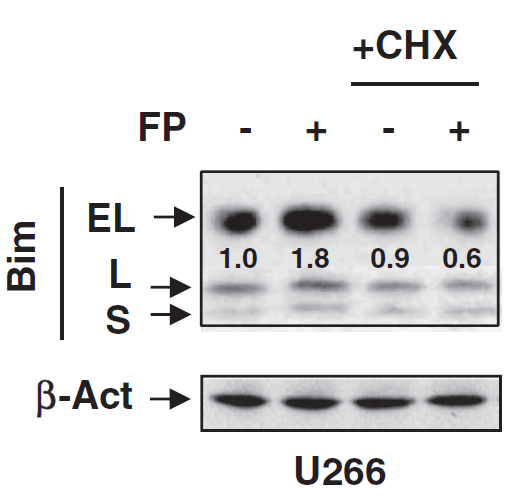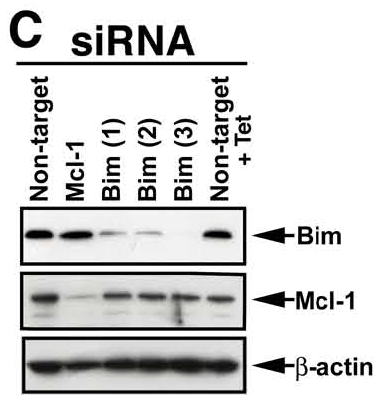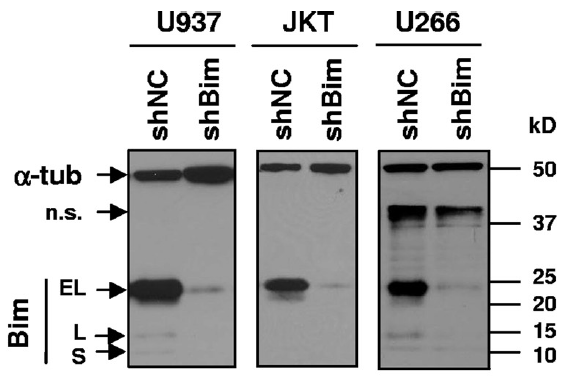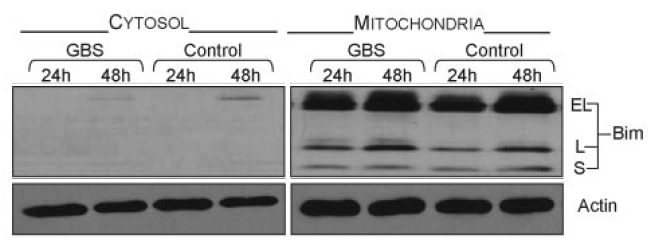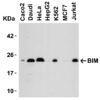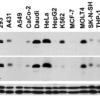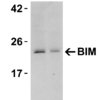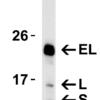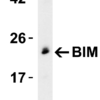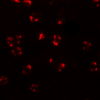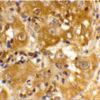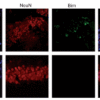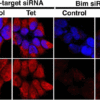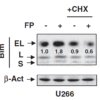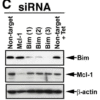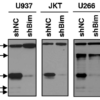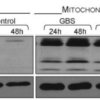Anti-Bim (IN) Antibody (2414)
$445.00
| Host | Quantity | Applications | Species Reactivity | Data Sheet | |
|---|---|---|---|---|---|
| Rabbit | 100ug | ELISA,WB,IHC-P,IF | Human, Mouse, Rat |  |
SKU: 2414
Categories: Antibody Products, Apoptosis Antibodies, Products
Overview
Product Name Anti-Bim (IN) Antibody (2414)
Description Anti-Bim (IN) Rabbit Polyclonal Antibody
Target Bim (IN)
Species Reactivity Human, Mouse, Rat
Applications ELISA,WB,IHC-P,IF
Host Rabbit
Clonality Polyclonal
Isotype IgG
Immunogen Peptide corresponding to aa 22-40 of human Bim. The sequence is identical to that of mouse and is different by one amino acid from that of rat.
Properties
Form Liquid
Concentration Lot Specific
Formulation PBS, pH 7.4.
Buffer Formulation Phosphate Buffered Saline
Buffer pH pH 7.4
Format Purified
Purification Purified by peptide immuno-affinity chromatography
Specificity Information
Specificity This antibody recognizes full-length Bim (23kDa) of human, mouse, and rat.
Target Name Bcl-2-like protein 11
Target ID Bim (IN)
Uniprot ID O43521
Alternative Names Bcl2-L-11, Bcl2-interacting mediator of cell death
Gene Name BCL2L11
Gene ID 10018
Accession Number NP_001191035
Sequence Location Endomembrane system
Biological Function Induces apoptosis and anoikis. Isoform BimL is more potent than isoform BimEL. Isoform Bim-alpha1, isoform Bim-alpha2 and isoform Bim-alpha3 induce apoptosis, although less potent than isoform BimEL, isoform BimL and isoform BimS. Isoform Bim-gamma induces apoptosis. Isoform Bim-alpha3 induces apoptosis possibly through a caspase-mediated pathway. Isoform BimAC and isoform BimABC lack the ability to induce apoptosis. {PubMed:11997495, PubMed:15486195, PubMed:15661735, PubMed:9430630}.
Research Areas Apoptosis
Background A novel BH3 domain-containing protein was recently identified and designated Bim or BOD from human, mouse, and rat. Bim/BOD interacts with diverse members in the pro- survival Bcl-2 subfamily including Bcl-2, Bcl-xL, and Bcl-w. Bim/BOD induces apoptosis. The messenger RNA of Bim is ubiquitously expressed in multiple tissues and cell lines.
Application Images














Description Western Blot Validation in Human Cell Lines
Loading: 15 ug of lysates per lane. Antibodies: BIM 2414, (0.5 ug/mL), 1h incubation at RT in 5% NFDM/TBST.Secondary: Goat anti-rabbit IgG HRP conjugate at 1:10000 dilution.
Loading: 15 ug of lysates per lane. Antibodies: BIM 2414, (0.5 ug/mL), 1h incubation at RT in 5% NFDM/TBST.Secondary: Goat anti-rabbit IgG HRP conjugate at 1:10000 dilution.

Description Independent Antibody Validation (IAV) via Protein Expression Profile in Cell Lines
Loading: 15 ug of lysates per lane. Antibodies: BIM 2414, (0.5 ug/mL), BIM 3405, (5 ug/mL), beta-actin (1 ug/mL) and GAPDH (0.02 ug/mL), 1h incubation at RT in 5% NFDM/TBST.Secondary: Goat anti-rabbit IgG HRP conjugate at 1:10000 dilution.
Loading: 15 ug of lysates per lane. Antibodies: BIM 2414, (0.5 ug/mL), BIM 3405, (5 ug/mL), beta-actin (1 ug/mL) and GAPDH (0.02 ug/mL), 1h incubation at RT in 5% NFDM/TBST.Secondary: Goat anti-rabbit IgG HRP conjugate at 1:10000 dilution.

Description Western Blot Validation in Human Tissue
Loading: 15 ug of lysates per lane. Antibodies: BIM 2414, (0.5 ug/mL), 1h incubation at RT in 5% NFDM/TBST.Secondary: Goat anti-rabbit IgG HRP conjugate at 1:10000 dilution.Lane 1: Human thymusLane 2: Human colon
Loading: 15 ug of lysates per lane. Antibodies: BIM 2414, (0.5 ug/mL), 1h incubation at RT in 5% NFDM/TBST.Secondary: Goat anti-rabbit IgG HRP conjugate at 1:10000 dilution.Lane 1: Human thymusLane 2: Human colon

Description Western Blot Validation in HeLa Cells
Loading: 15 ug of lysate per lane. Antibodies: BIM 2414, (0.5 ug/mL), 1h incubation at RT in 5% NFDM/TBST.Secondary: Goat anti-rabbit IgG HRP conjugate at 1:10000 dilution.BIM 2414 can detect all three human isoforms, including EL, L and S isoforms.
Loading: 15 ug of lysate per lane. Antibodies: BIM 2414, (0.5 ug/mL), 1h incubation at RT in 5% NFDM/TBST.Secondary: Goat anti-rabbit IgG HRP conjugate at 1:10000 dilution.BIM 2414 can detect all three human isoforms, including EL, L and S isoforms.

Description Western Blot Validation in Rat Myeloma Cell line
Loading: 15 ug of rat myeloma YB2/0 cell lysate per lane. Antibodies: BIM 2414, (0.5 ug/mL), 1h incubation at RT in 5% NFDM/TBST.Secondary: Goat anti-rabbit IgG HRP conjugate at 1:10000 dilution.
Loading: 15 ug of rat myeloma YB2/0 cell lysate per lane. Antibodies: BIM 2414, (0.5 ug/mL), 1h incubation at RT in 5% NFDM/TBST.Secondary: Goat anti-rabbit IgG HRP conjugate at 1:10000 dilution.

Description Immunofluorescence Validation of BIM in K562 Cells
Immunofluorescent analysis of 4% paraformaldehyde-fixed K562 cells labeling Bim with 2414 at 20 ug/mL, followed by goat anti-rabbit IgG secondary antibody at 1/500 dilution (red).
Immunofluorescent analysis of 4% paraformaldehyde-fixed K562 cells labeling Bim with 2414 at 20 ug/mL, followed by goat anti-rabbit IgG secondary antibody at 1/500 dilution (red).

Description Immunohistochemistry Validation of BIM in Human Skin Cancer Cells
Immunohistochemical analysis of paraffin-embedded human spleen tissue using anti-BIM antibody (2414) at 20 ug/ml. Tissue was fixed with formaldehyde and blocked with 10% serum for 1 h at RT; antigen retrieval was by heat mediation with a citrate buffer (pH6). Samples were incubated with primary antibody overnight at 4C. A goat anti-rabbit IgG H&L (HRP) at 1/250 was used as secondary. Counter stained with Hematoxylin.
Immunohistochemical analysis of paraffin-embedded human spleen tissue using anti-BIM antibody (2414) at 20 ug/ml. Tissue was fixed with formaldehyde and blocked with 10% serum for 1 h at RT; antigen retrieval was by heat mediation with a citrate buffer (pH6). Samples were incubated with primary antibody overnight at 4C. A goat anti-rabbit IgG H&L (HRP) at 1/250 was used as secondary. Counter stained with Hematoxylin.

Description Induced Expression Validation of BIM in Mouse Hippocampus (Tsuchiya et al., 2011)
The induction of Bim protein was detected by immunohistochemical analysis of mice after i.h. injection of epoxomicin with anti-BIM antibodies. Sections from epoxomicin-treated animals exhibited cells staining positive for Bim expression within the NeuN-positive population of neurons in the CA1 of the ipsilateral side. In contrast, Bim-positive cells were absent within the NeuNpositiveCA1 neurons on the contralateral side.
The induction of Bim protein was detected by immunohistochemical analysis of mice after i.h. injection of epoxomicin with anti-BIM antibodies. Sections from epoxomicin-treated animals exhibited cells staining positive for Bim expression within the NeuN-positive population of neurons in the CA1 of the ipsilateral side. In contrast, Bim-positive cells were absent within the NeuNpositiveCA1 neurons on the contralateral side.

Description KD Validation of BIM in 293 Cells (Han et al., 2010)
Immunofluorescence analysis with anti-BIM antibodies was performed for BIM in 293 cells transfected with control siRNA or BIM siRNA. BIM expression was disrupted after BIM siRNA knockdown.
Immunofluorescence analysis with anti-BIM antibodies was performed for BIM in 293 cells transfected with control siRNA or BIM siRNA. BIM expression was disrupted after BIM siRNA knockdown.

Description Regulated Expression Validation of BIM in U266 Cells (Chen et al., 2012)
Immunoblot analysis was carried out to monitor protein expression of 3 isoforms (EL, L, and S) of Bim with anti-BIM antibodies. BIM expression was up-regulated by flavopiridol treatment, which was blocked by Cycloheximide in U266 cells.
Immunoblot analysis was carried out to monitor protein expression of 3 isoforms (EL, L, and S) of Bim with anti-BIM antibodies. BIM expression was up-regulated by flavopiridol treatment, which was blocked by Cycloheximide in U266 cells.

Description WB KD Validation of BIM in 293 Cells (Han et al., 2010)
Western blot analysis with anti-BIM antibodies was performed for BIM in 293 cells transfected with control siRNA or BIM siRNA. BIM expression was disrupted after BIM siRNA knockdown.
Western blot analysis with anti-BIM antibodies was performed for BIM in 293 cells transfected with control siRNA or BIM siRNA. BIM expression was disrupted after BIM siRNA knockdown.

Description KD Validation of BIM in Human Cell Lines (Chen et al., 2009)
Human leukemia (U937 and Jurkat) and myeloma (U266) cells were stably transfected with constructs encoding shBim or a scrambled sequence (shNC). Immunoblotting was preformed to monitor expression of Bim in these cells with anti-BIM antibodies. BIM expression was disrupted after shBIM knockdown.
Human leukemia (U937 and Jurkat) and myeloma (U266) cells were stably transfected with constructs encoding shBim or a scrambled sequence (shNC). Immunoblotting was preformed to monitor expression of Bim in these cells with anti-BIM antibodies. BIM expression was disrupted after shBIM knockdown.
Description Localization Validation of BIM in Mouse Macrophages (Ulett et al., 2005)
Immunoblots of subcellular fractions enriched for mitochondria and cytosol were used to determine BIM protein levels with anti-BIM antibodies in J774A cells. BIM is exclusively expressed in mitochondria
Immunoblots of subcellular fractions enriched for mitochondria and cytosol were used to determine BIM protein levels with anti-BIM antibodies in J774A cells. BIM is exclusively expressed in mitochondria
Handling
Storage This antibody is stable for at least one (1) year at -20°C. Avoid multiple freeze-thaw cycles.
Dilution Instructions Dilute in PBS or medium which is identical to that used in the assay system.
Application Instructions Immunoblotting: use at 1ug/mL.
Immunocytochemistry: use a 10-20ug/mL
These are recommended concentrations.
Enduser should determine optimal concentration for their application.
Positive control: Whole cell lysate of human K562 cells.
Immunocytochemistry: use a 10-20ug/mL
These are recommended concentrations.
Enduser should determine optimal concentration for their application.
Positive control: Whole cell lysate of human K562 cells.
References & Data Sheet
Data Sheet  Download PDF Data Sheet
Download PDF Data Sheet
 Download PDF Data Sheet
Download PDF Data Sheet

